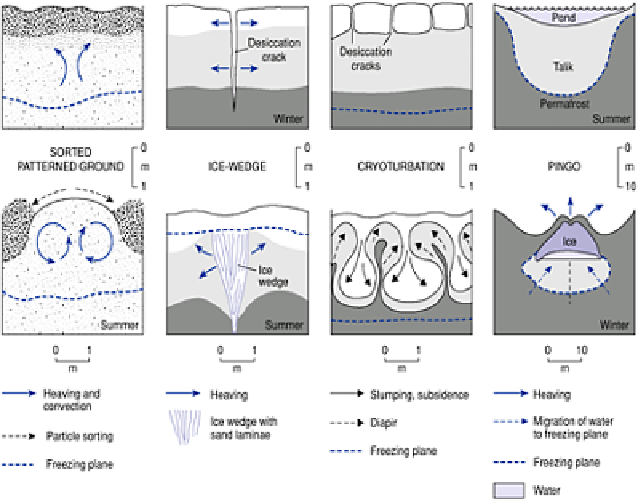Environmental Engineering Reference
In-Depth Information
ground as they break surface, creating a stone circle around a dome of fines. Ice wedges
form in desiccation cracks and effect a cruder form of sorting. Initiated by desiccation,
cracks collect water and washed or deflated fine sediment during melt seasons. They
continue to widen and propagate through the active layer during the next freezing cycle.
Ice wedges reach 1-10 m depth (exceptionally, an order of magnitude deeper) and 5-50
m apart horizontally. Larger and deeper wedges reflect greater permafrost duration and
the intensity and frost susceptibility of the substrate.
Frost sorting and wedging frequently lead to
patterned ground
development as
individual foci make edge contact with each other (Plate 15.14). Constant rates of
heaving or wedging in perfectly homogeneous
Figure 15.13
Permafrost ground disturbances; upper and
lower levels show initial and concluding stages respectively
in each major process.
material on a flat surface would, in theory, lead to an isomorphic network of connecting
polygons or hexagons. Patterned ground is a reasonable approximation but some

